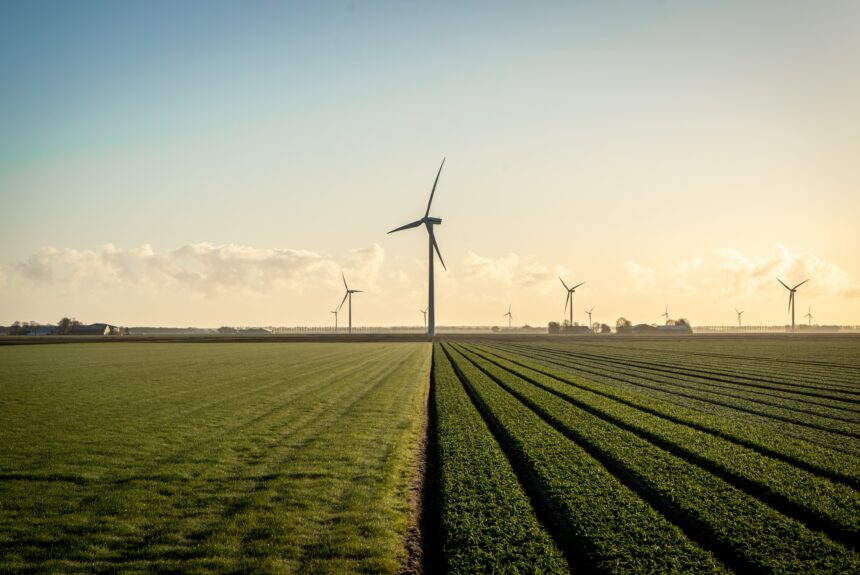President Joe Biden’s ambitious post-pandemic recovery plan includes a historic push toward clean energy in 2023, with plans to electrify much of America’s economy and meet nearly all the resulting increases in demand for power – from transportation to manufacturing – with variable renewable energy.
>>>READ: Yes, There’s a Republican Climate Plan, and It’s Awesome
The transition from fossil fuels to cleaner alternatives in response to climate change has become the biggest spending priority of the Biden presidency, including dedicating more than half of last year’s $740 billion Inflation Reduction Act (IRA) to climate and clean energy investments.
The IRA’s $375 billion in clean energy incentives is in addition to billions in climate-related spending approved by Congress in the 2021 infrastructure law, CHIPS and Science Act, and other bills since Biden entered the White House with the pledge to halve the country’s greenhouse gas emissions, from 2005 levels, by the end of the decade.
But while the generous use of the public purse was feasible as long as Democrats maintained majorities in both chambers of Congress, Republicans taking control of the House in January changed the outlook on Capitol Hill significantly.
A top-down, big government approach won’t work with the new crop of Republicans, especially with inflation hovering near 7 percent and a looming partisan showdown over raising the national debt limit.
That doesn’t mean Republicans and Republican-leaning independents aren’t interested in addressing climate change, modernizing the electricity industry, and expanding clean energy production in 2023. It does mean a different approach is needed to achieve those goals that doesn’t put the burden on taxpayers.
Last year, a national survey released by Citizens for Responsible Energy Solutions (CRES) found that Americans, including a majority of Republican primary voters, support “commonsense” policies to reduce emissions linked to climate change and increase the use of cleaner sources of energy. Separate polling by Pew showed a 69 percent majority of Americans support prioritizing the development of clean energy, including distributed energy resources (DERs) like solar-plus-storage and electric vehicles.
Voters of all stripes care about the environment and, as electricity consumers, want to be part of the solution to climate change, but they want more of a voice in the energy transition. They also want realistic climate solutions, a more prominent role for the private sector, and fewer government mandates, which tend to drive up prices.
Republicans often have mixed views of the environmental benefits of policies aimed at reducing the impacts of climate change, with many worried about unintended consequences for the economy. Supply and demand, and the role of consumers – big and small – in setting it, often gets overlooked.
That presents an opportunity for Republicans who have long championed free-market economic principles to support policy and regulatory reforms that reduce barriers to entry for private-sector energy and technology companies to compete for customers.
>>>READ: Texas Grid Proposal Should Bolster Reliability, Protect Consumers
Competitive market structures are one of the most effective tools to achieve our nation’s shared energy, environmental, and economic goals. Liberalized markets enable competition between energy sources, while market-based mechanisms provide incentives for consumers to adopt cleaner energy sources.
In the handful of states with restructured markets that give consumers the right to choose their service provider, competition is spurring innovation and the deployment of new digital technologies that offer consumers lower prices, greater control over their energy use, and more freedom to express their energy preferences.
Unfortunately, much of the country is still under the outdated regulated electricity market structure where a single vertically integrated utility has a monopoly over generating and distributing electricity within its service area. The absence of competition in monopoly areas limits innovation and ignores consumer preferences for clean energy and efficiency improvements, including behind-the-meter, customer-owned solar, batteries, heat pumps, smart appliances, and other devices.
Rather than allowing incumbent utilities in regulated markets to repeat the poor investment decisions of the past, policymakers should promote consumer sovereignty by fully opening electricity markets to competition.
As Congress considers how to advance the energy transition, it should prioritize policies that put consumers first. That means removing barriers to competition and embracing the fact that the new electricity customer is not only an end-user but a producer of electricity as well.
Support for the transition to clean energy in 2023 may be more complicated under a divided government, but that doesn’t mean it’s a lost cause. Clean energy advocates must adjust their approach and allow the market to drive decision-making. Such a transition would be a win for both consumers and the environment.
Robert Dillon is Executive Director of the Energy Choice Coalition and a Senior Fellow at the Joseph Rainey Center for Public Policy.
The views and opinions expressed are those of the author’s and do not necessarily reflect the official policy or position of C3.
